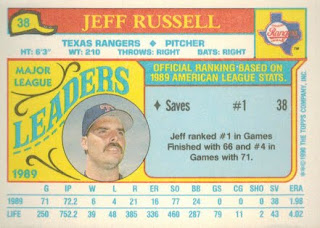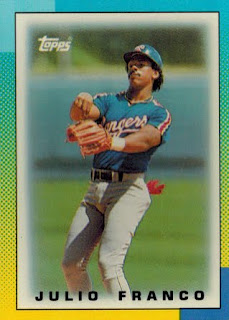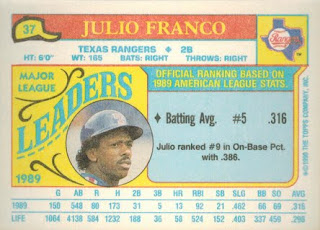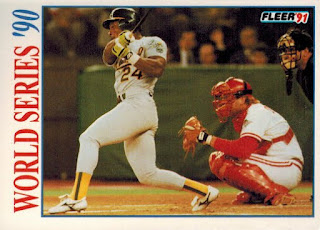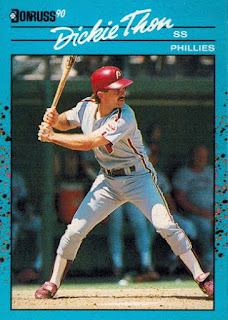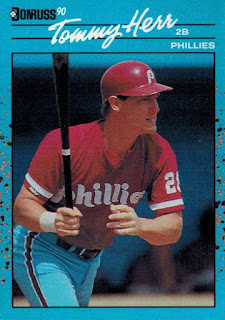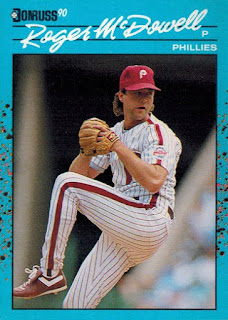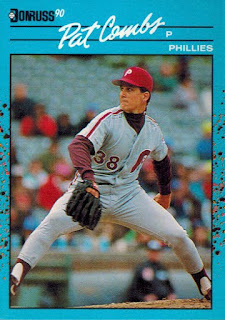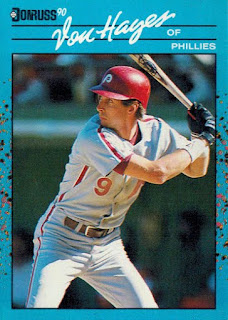I've meant for a long time to do a post of the Harmon Killebrew cards in my collection. I've had two good cards of him, and a handful of others of him, in my collection for a long time, and I've picked up some more good ones recently.
 |
| 1959 Topps Harmon Killebrew. |
|
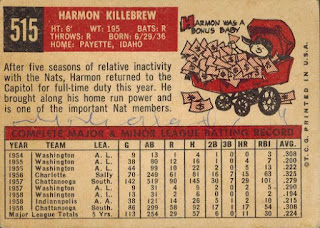 |
| 1959 Topps card back. |
|
This is one of the two good ones, his 1959 Topps card. I was most familiar with the 1959 design in the late 80s and early 90s from the Baseball Cards magazine repli-cards of then-current players. But I did manage to pick up exactly one 1959 Topps card back then; I wish I knew where I got it or how much it cost. As you can see on the card back, the card has been written on. Getting damaged cards was a strategy I employed back then to get vintage Hall-of-Famers.
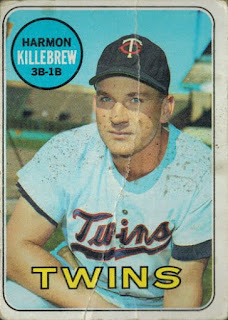 |
| 1969 Topps Killebrew. |
|
 |
| 1982 K-Mart MVPs. |
|
The other good card of Killebrew from my original collection is this 1969 Topps. You can see the damage very clearly -- it's got what I think is a wax stain across the front, and it's got multiple creases including a big one all the way down the front. As the 1982 K-Mart 20th Anniversary card shows, Killebrew had a good year, being named the 1969 AL MVP. This K-Mart card was also part of my original collection from the 80s and 90s.
 |
| 1972 Topps Killebrew. |
|
 |
| 1972 Topps Killebrew In Action. |
|
I've picked up a couple more vintage Killebrew cards as part of building a 1972 Topps set. He has a regular card and an In Action. He was getting towards the end of his career, but still appeared on Topps cards through the 1975 set.
 |
| 1972 Topps AL RBI Leaders. |
Killebrew had one more appearance in the 1972 set (I'm not counting a Twins team picture) on this 1971 AL RBI leaders card. He led the AL with 119, which was third in the majors behind Joe Torre of the Cardinals with 137 and Willie Stargell with 125. Next in the majors were Hank Aaron with 118, Bobby Bonds with 102, and then the next AL player was Frank Robinson with 99, tied with Willie Montanez of the Phillies. Next in the NL were Lee May with 98 and Rusty Staub with 97. Placing third in the AL was Reggie Smith of the Red Sox with 96. So these three, Killebrew, Robinson, and Smith, were the only three AL players in the MLB top ten in RBI in 1971.
 |
| 1962 Post Killebrew. |
|
 |
| 1968 Topps Embossed Killebrew. |
|
These two, the 1962 Post and the 1968 Topps Embossed insert, are also recent acquisitions since I've resumed collecting. I posted these both already when I got them. In both cases, I bought a small number of cards to represent these sets in my collection (and in my main binder). I posted all of the 1962 Post cards, but my other couple of embossed cards I never posted. I'll show them soon.
 |
| 1985 Circle K Home Run Kings. |
|
 |
| 1987 K-Mart Stars of the Decades. |
|
One of my favorite acquisitions since I restarted collecting is the 1985 Circle K Home Run Kings set. Here's Killebrew's card from that. The guys in that set are, to me, the real deal. I think the worst part of baseball's steroid era is the use of those drugs to destroy baseball's great records, baseball's history. The home run records mean nothing today. But back then, when local hero Mike Schmidt finished 7th all time, I loved learning about the guys in front of him -- Reggie Jackson, Harmon Killebrew, Frank Robinson, Willie Mays, Babe Ruth, and Hank Aaron.
Then we have another K-Mart card, from the 1987 set featuring stars of the decades. Killebrew would have been one of the stars of the 60s. We'll see if K-Mart is around much longer; it's not looking good. My wife and I have moved a lot, but in different places over the years, when we've lived near a K-Mart we've shopped there, and my family shopped there sometimes when I was a kid in the 80s. All of that is commemorated in my collection with my three K-Mart sets.
 |
| 1988 Pacific Legends Killebrew. |
|
 |
| 2018 Donruss Killebrew, in the 1984 style. |
|
Finally we have these two, a Pacific Legends that I pulled from a wax pack back in the day, and a current Donruss card in the 1984 style, that I pulled from a dollar store pack last year.
Thanks for reading!











